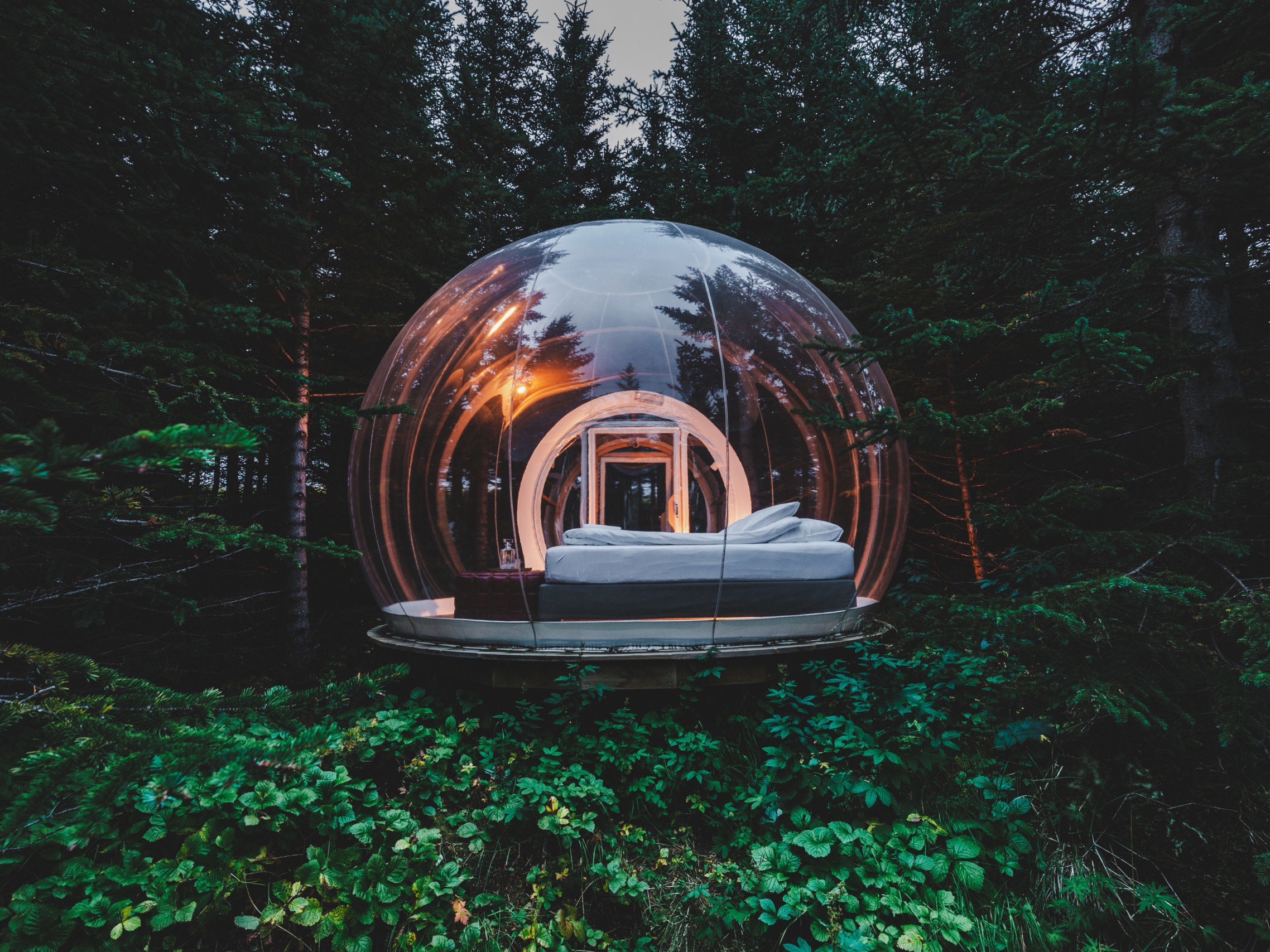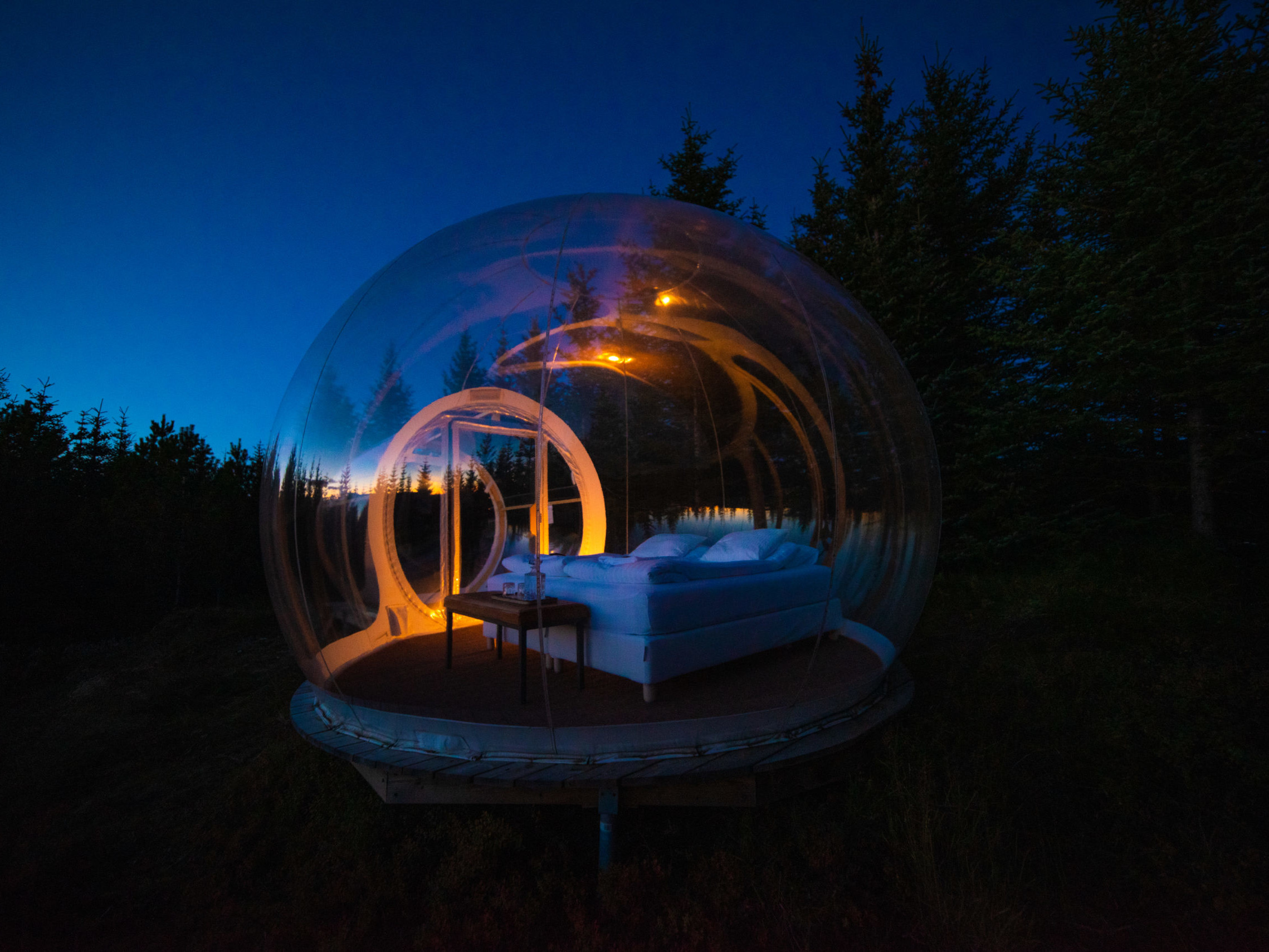10 Things To Do & Placesto Visit In Iceland
By Robert Robertsson - Verified Travel Expert
- Home
- Northern lights forecasts
- 10 Things To Do & Places to Visit In Iceland
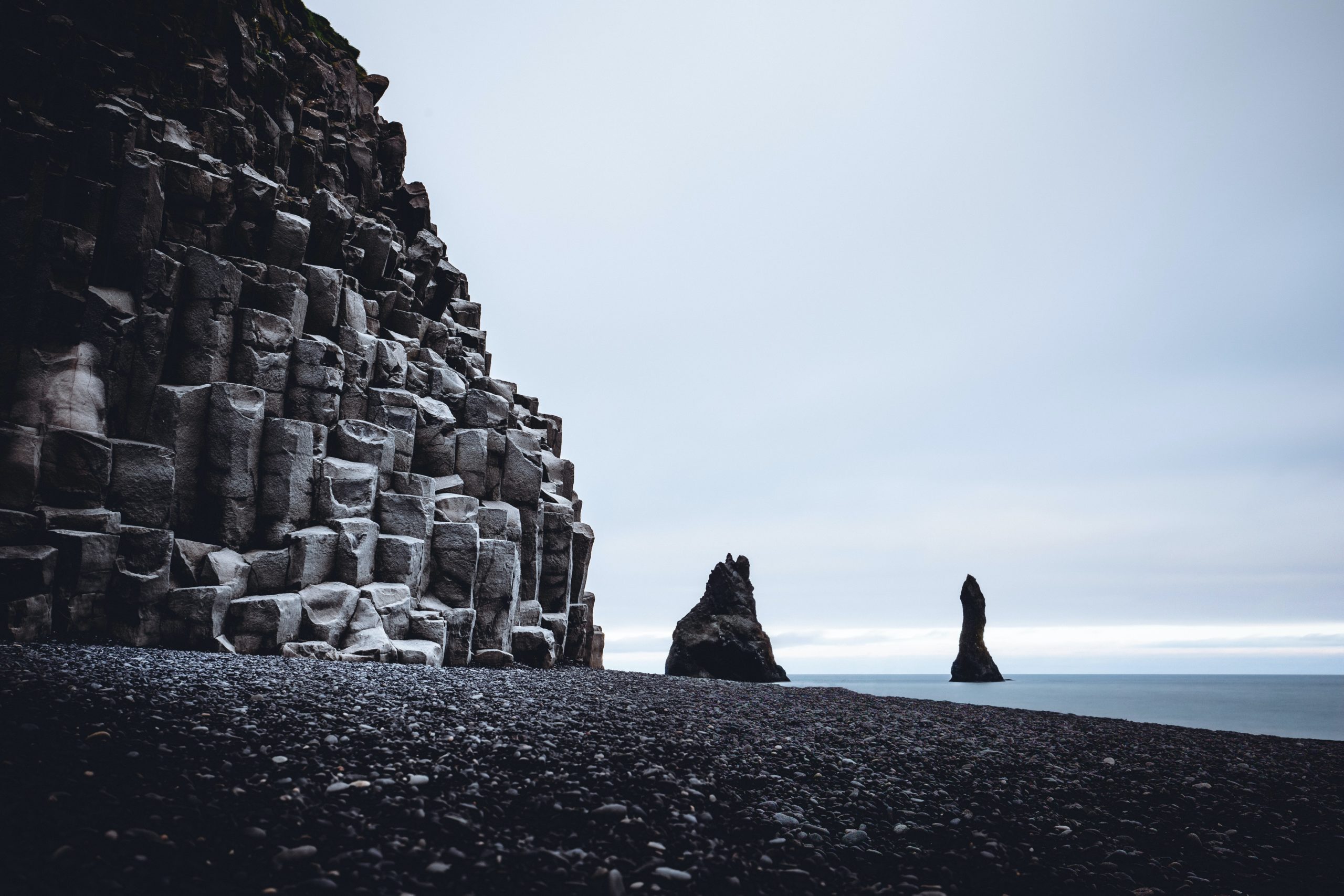
Discover all of Iceland’s must-see attractions – natural marvels, cultural events or hidden gems alike! Read up and discover where and what await you on your travels in this Nordic nation. Iceland offers too much to keep track of.
Iceland is an intriguing land of stark contrasts: rivers carving through deserts and molten lava bubbling out from an island frozen over by glaciers; while its nature fluctuates between fire and frost with winter nights seemingly never-ending and summer nights boasting sun that never sets.
Before booking, many factors need to be considered: such as accommodation choices offered across Iceland before even considering car rental offers – some offering discounts!!
Where to Go in Iceland
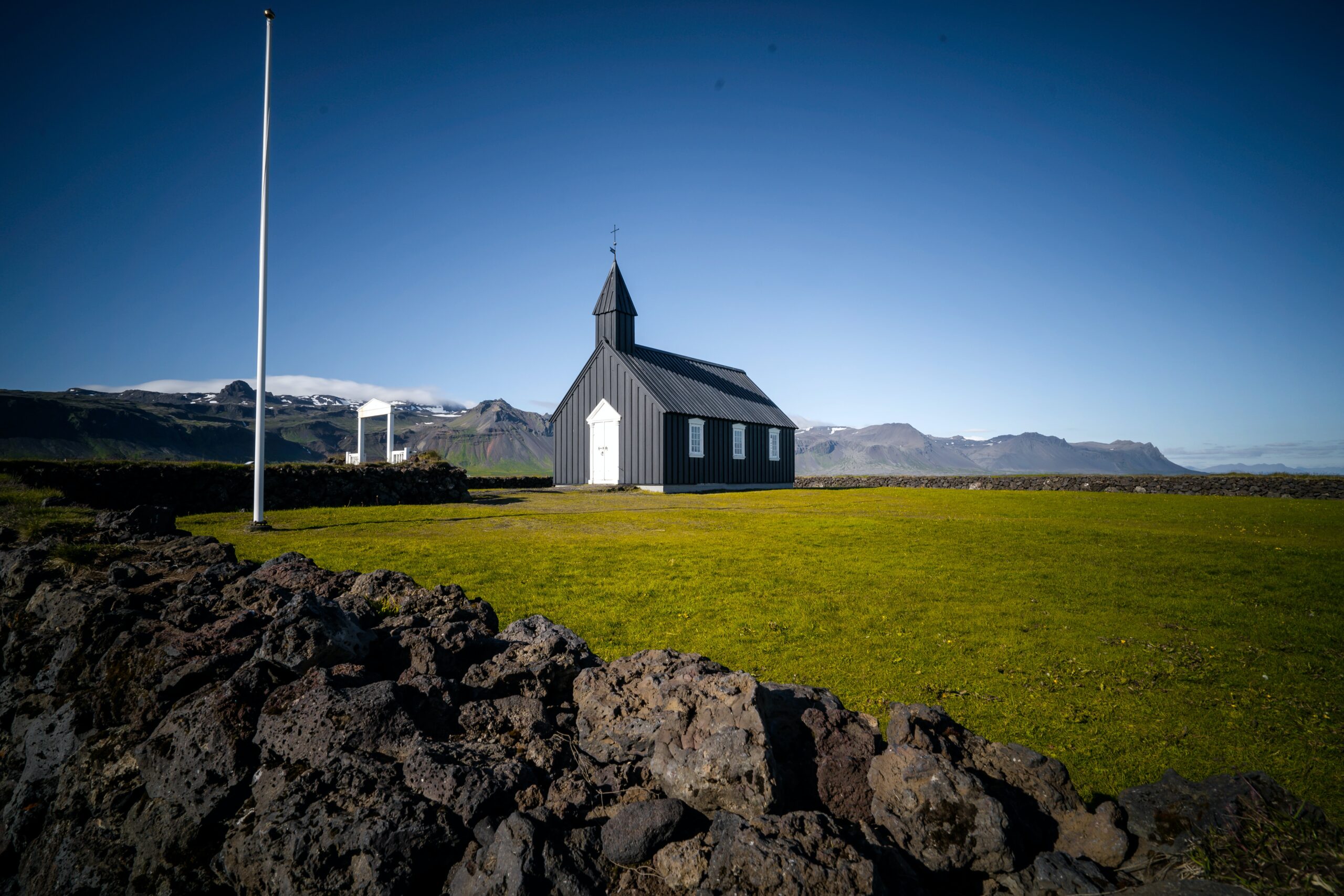
Iceland boasts many natural wonders and cultural attractions to delight any traveller, and no matter the length of your stay in this Nordic nation you are sure to discover incredible destinations that match up perfectly to your interests and travel requirements. Reykjavik will likely be their initial stop when visiting Iceland, arriving via flying into Keflavik International Airport and driving over Reykjanes Peninsula. Iceland’s capital boasts stunning landmarks like Hallgrimskirkja church, Harpa Concert Hall and Perlan’s interactive museum – not to mention wildlife such as whale and puffin watching tours in Faxafloi Bay as well as conservation reserves like Seltjarnarnes and Heidmork!
City offers numerous high-end accommodations that provide an ideal starting point for exploring further. Of particular note is its Golden Circle sightseeing route – easily toured in just one day! On this trail you’ll encounter Thingvellir National Park- a UNESCO World Heritage site between two tectonic plates- as well as Geysir Geothermal Area and Gullfoss waterfall- two iconic attractions of which are listed as World Heritage. Additionally, longer excursions could uncover lesser-known but equally beautiful attractions, like Kerid Crater Lake. Reykjavik makes exploring Iceland’s South Coast sightseeing route an accessible endeavor, taking visitors past famous waterfalls like Skogafoss and Seljalandsfoss as well as black sand beach Reynisfjara and impressive volcanoes such as Eyjafjallajokull – known for erupting spectacularly in 2010.
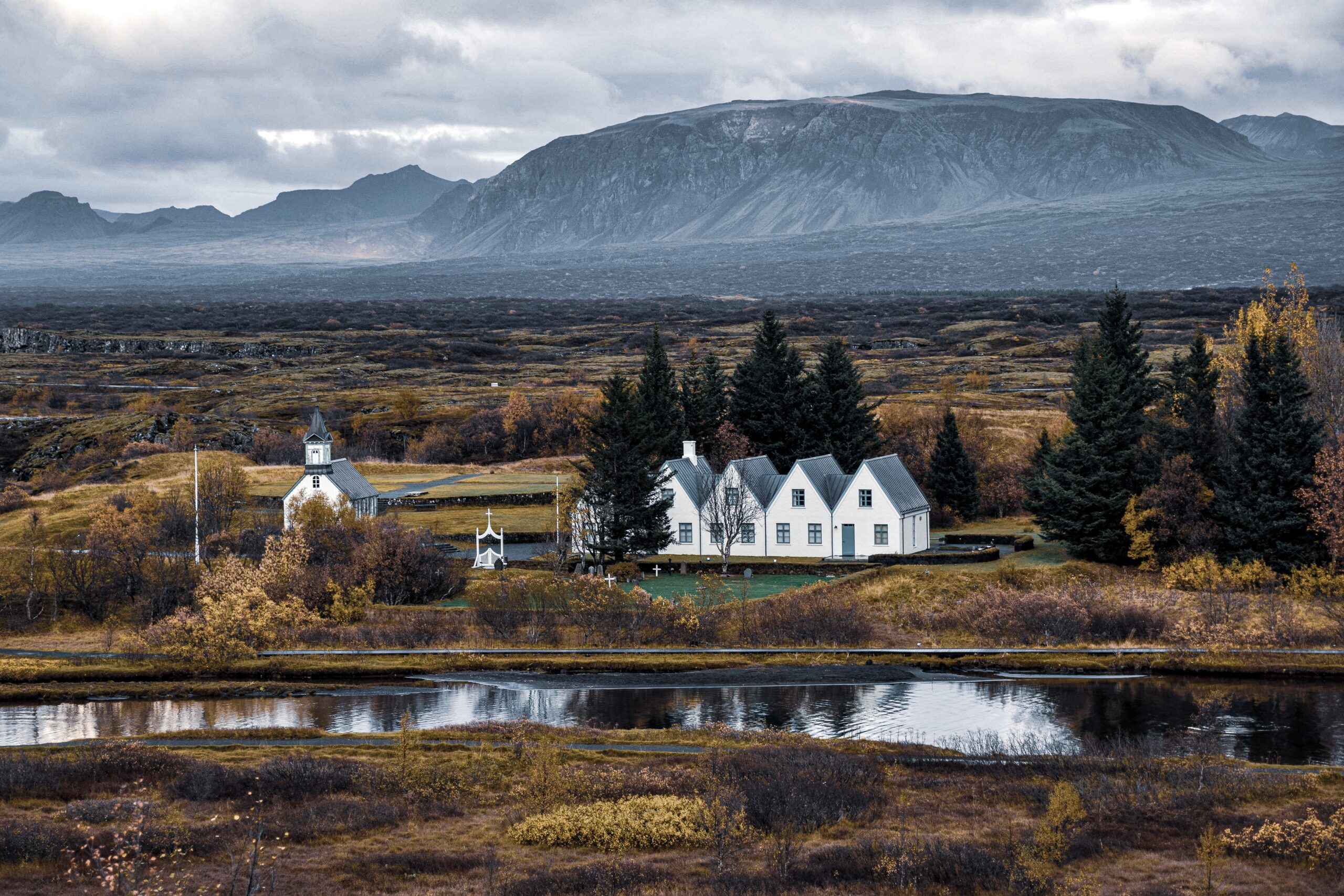
Further along Iceland’s South Coast are other incredible attractions such as Skaftafell Nature Reserve and Jokulsarlon glacier lagoon, easily reached within one day from Reykjavik by dedicated travelers; for an enhanced experience however, staying overnight or taking an epic ring road adventure trip are recommended for maximum exploration! The Ring Road offers the ideal holiday for exploring Iceland’s diverse nature and all that its nature has to offer. Travel along its length can introduce visitors to stunning Eastfjords, Lake Myvatn in North Iceland’s geothermal power and other stunning attractions – and more besides.
What is great to see in Iceland
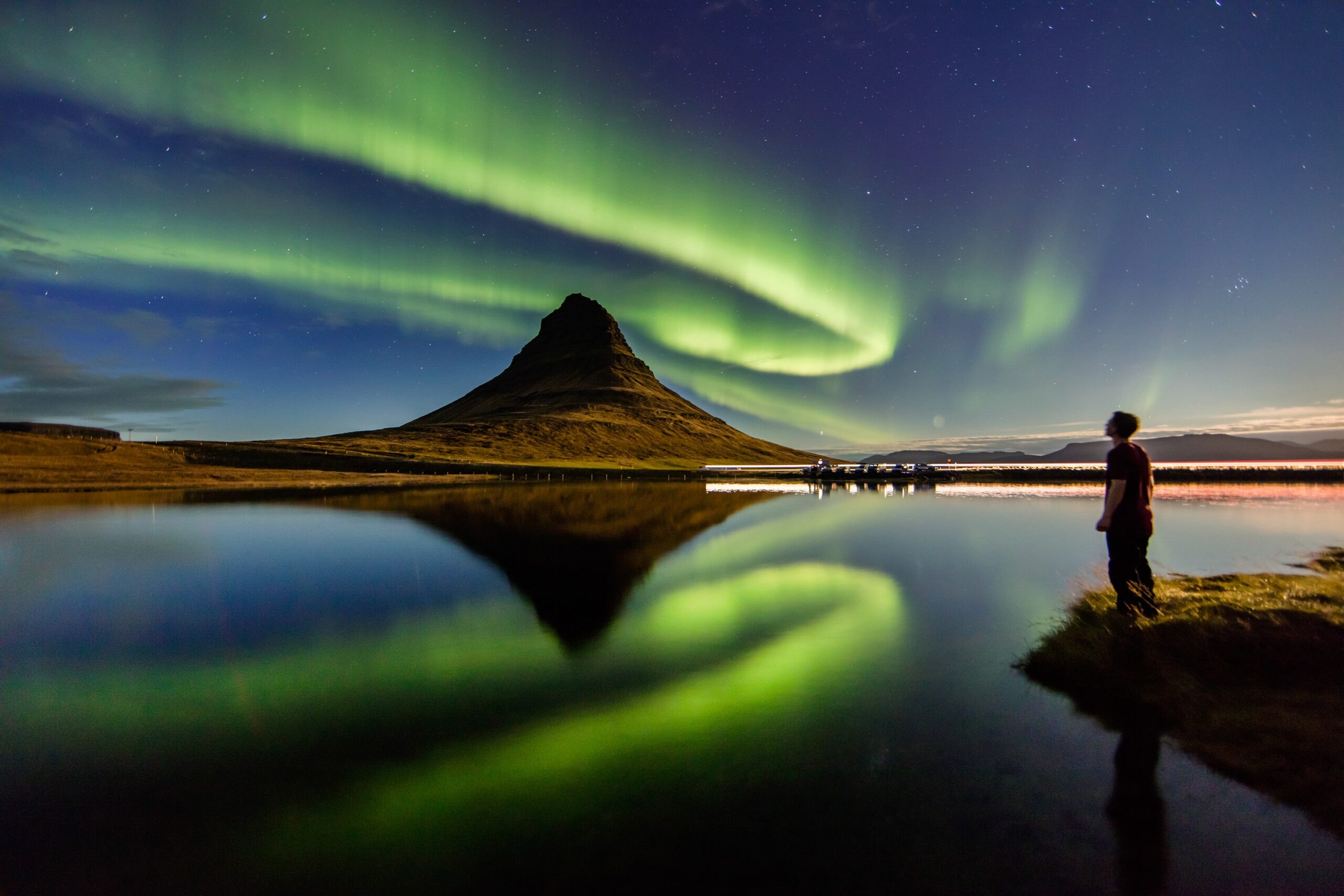
Whenever I think of Iceland, it’s like my mind jumps straight into a storybook. It’s hard to believe a place so magical is real. With so few people around, nature’s had a chance to go wild in the best way. You’ve got these incredible volcanoes and glaciers that look like they’ve been chiseling away at the land for ages. And the waterfalls – they’re not just trickles but epic cascades that could drown out any conversation. Then there are these hot springs, bubbling away and steaming like something out of a fantasy novel. Don’t get me started on the icebergs and that almost alien, moon-like landscape! And the wildlife? It’s like they’re from a different world too, especially those playful whale dolphins and the birds along the coast. Iceland’s just unreal, like nature’s showing off all its best bits in one place
If you’re into birdwatching and find yourself traveling in summer, you’re in for a treat in Iceland. The puffins here are something else – they’re like little clowns of the sea, all decked out in their colorful beaks. They hang out on the islands and cliffs, and honestly, Iceland’s got to be the top spot in the world to catch a glimpse of these quirky birds. And oh, the summer in Iceland has its own kind of magic, especially with the midnight sun. Picture this: It’s July, and you’re there from mid-May to August, and the sun just doesn’t bother to set. It hovers there, on the horizon, all night long. This means you get these insanely long days, where 2 AM looks like early evening and you can just keep exploring, hiking, or whatever tickles your fancy, without worrying about it getting dark. The whole midnight sun thing? It’s a game-changer for sightseeing and soaking up as much of Iceland as you can.
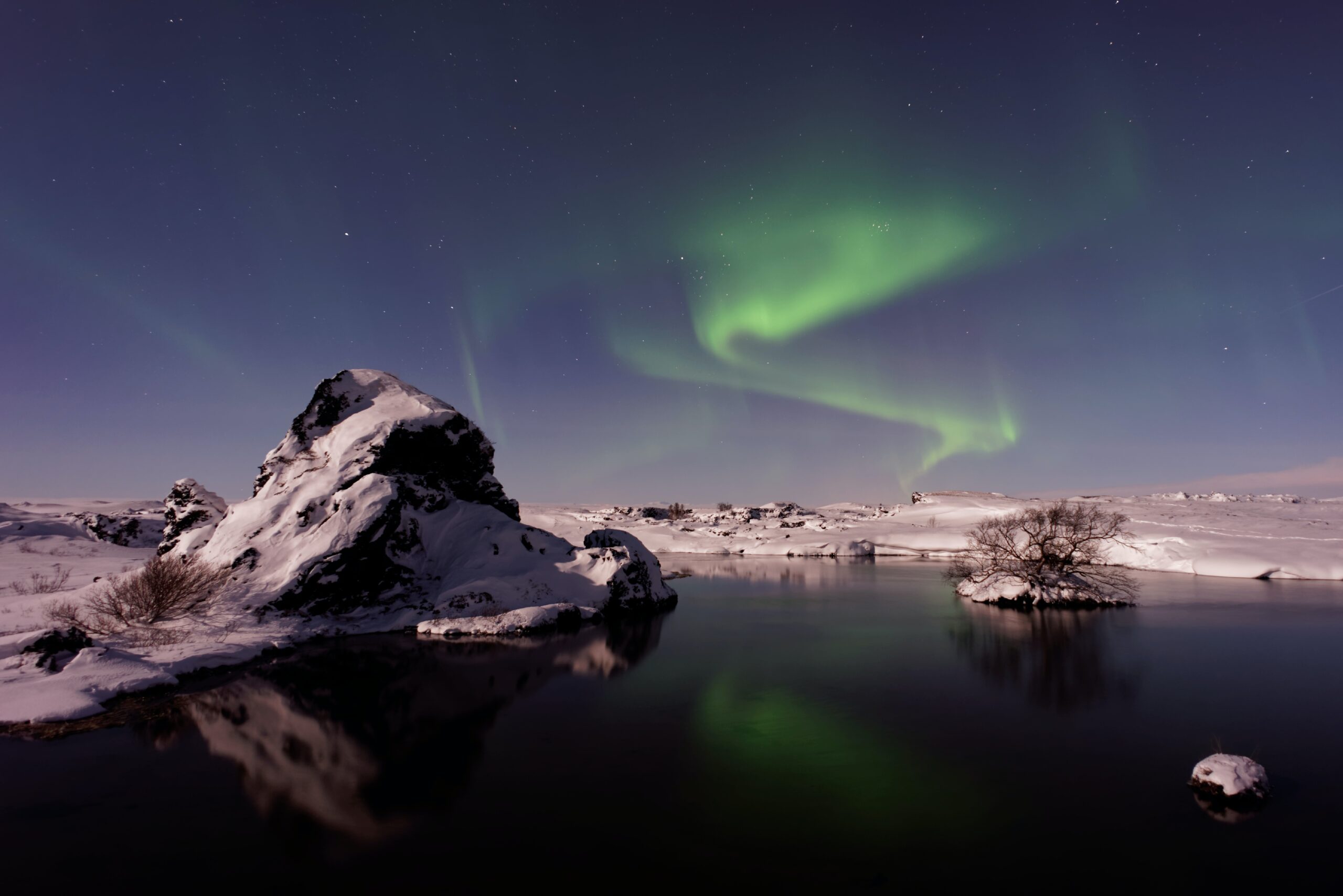
There’s something about Iceland’s winters that feels straight out of a fairy tale, especially with the northern lights, or aurora borealis, painting the night skies. Imagine this: you’re there between September and April, the sky’s dark and clear, and you’re just waiting, breath held, for that magical display. Seeing the northern lights dance above you is a dream come true for almost every winter traveler – it’s like nature’s own light show. And then there’s Mount Kirkjufell, with the northern lights reflecting off the sea like a mirror. It’s a sight you have to see to believe. But that’s not all winter in Iceland has to offer. You’ve got these incredible ice caves, this brilliant crystal blue, hidden away in the glaciers. They’re rare, these formations, and constantly changing. When you step inside and the sunlight hits the ice, the whole world turns this surreal shade of blue. It’s like walking into a fantasy, a whole different realm!
Our Selection of Top Attractions in Iceland
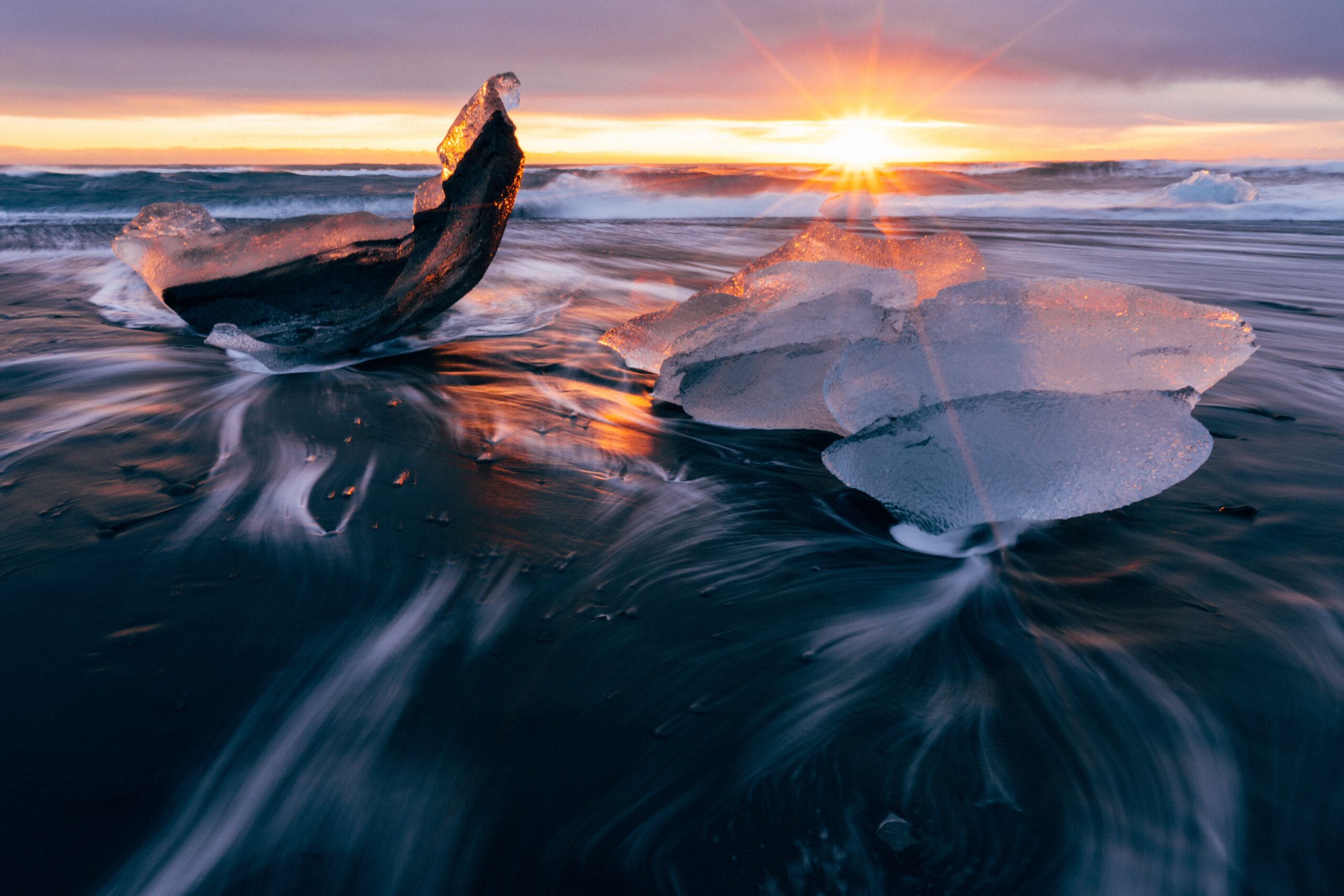
Talking about Iceland’s wonders, I’ve already touched on some big names like Reykjavik, the Golden Circle, the South Coast, and those mesmerizing northern lights. But trust me, there’s a whole lot more to this island than just its headliners.
Take the Blue Lagoon, for instance. Picture a steamy bridge crossing over its warm waters. Of all the geothermal spas sprinkled around Iceland, the Blue Lagoon is a standout. Right near the Keflavik International Airport on the Reykjanes Peninsula, it’s the perfect spot to either kick off or wrap up your Icelandic adventure.
Then there’s the Snaefellsnes peninsula, affectionately dubbed ‘Iceland in miniature. ‘ Everything you love about Iceland, packed into West Iceland – historic villages, wildlife, mountains that take your breath away, waterfalls, and beaches you won’t believe. The Snaefellsjokull National Park, with its namesake glacier, is a highlight not to be missed.
Ever heard of the Westfjords? This remote, sparsely populated area is like stepping into another time, with dramatic fjords set against enormous mountains. It’s a bit off the beaten path, only really accessible in summer, but oh so worth it for its untouched nature, quaint fishing villages, and wildlife – think arctic foxes, whales, seals, and puffins.
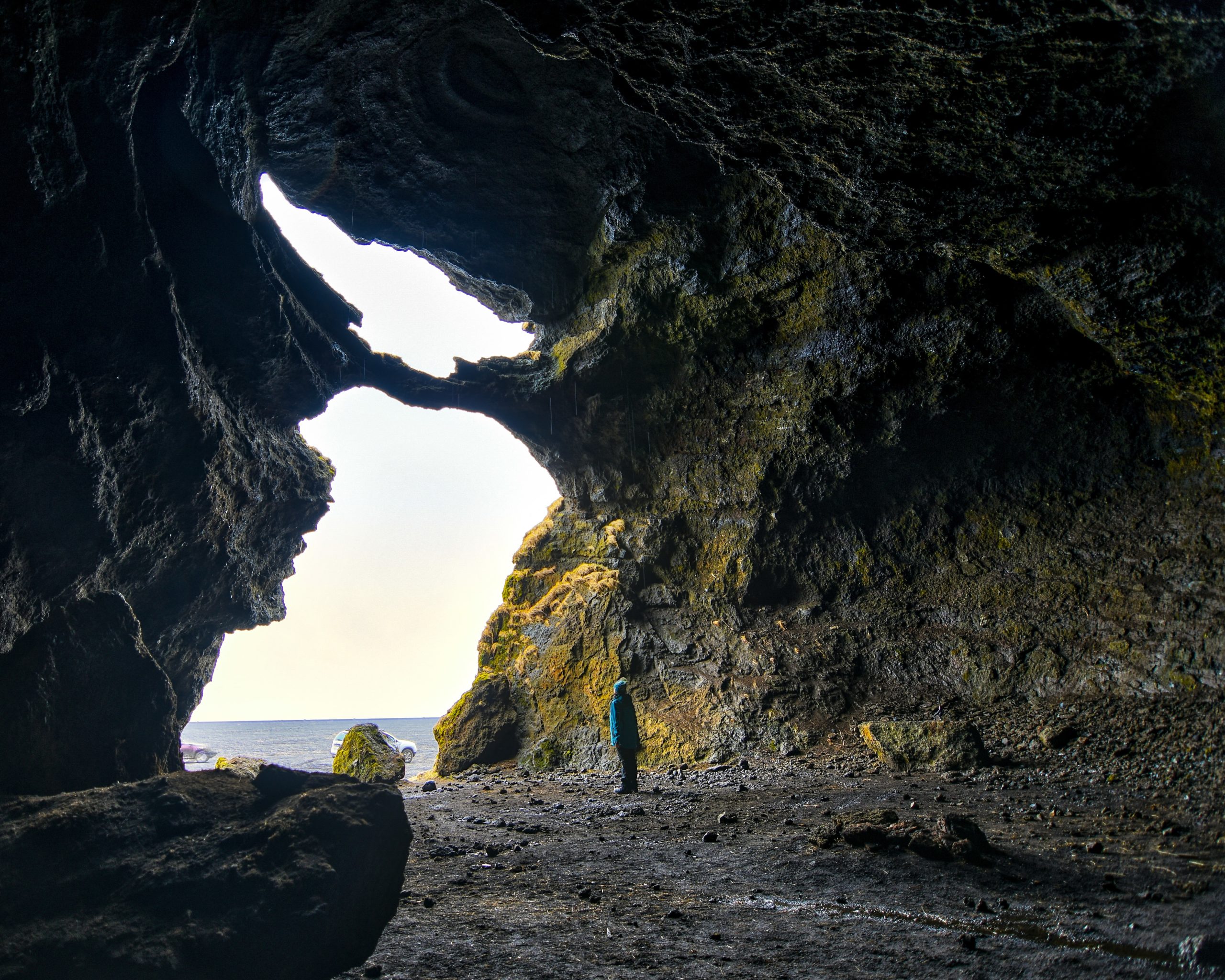
North Iceland is another gem, famous for the Lake Myvatn area and the lovely town of Akureyri. But it’s the Diamond Circle that steals the show, with sights like the Asbyrgi canyon, Husavik for whale-watching, and Europe’s second-most powerful waterfall, Dettifoss. And if you’re up for it, there are plenty of hidden treasures off the main roads here.
The Eastfjords, unlike the Westfjords, are accessible all year round and are part of the Ring Road circuit. Dramatic mountains, charming little bays, and tiny villages abound, and it’s the only place in Iceland where wild reindeer roam. And then there’s Mount Vestrahorn, stunning even in winter’s snow, and Vatnajokull National Park.
Centered around Europe’s largest ice cap, the Vatnajokull glacier, its south side is especially popular, with the Jokulsarlon glacier lagoon and the awe-inspiring Skaftafell Nature Reserve.
Lastly, for the true adventurers, there are the Highlands. Untouched, uninhabited, and wild with volcanoes, hot springs, and glaciers – it’s a hiker’s paradise. The Laugavegur trail, linking Landmannalaugar Nature Reserve to Thorsmork Valley, is a journey through some of the most dramatic landscapes you’ll ever see.
10 Best Things To Do in Iceland
Planning your Iceland adventure and wondering how to tackle it? Whether you’re hitting the road on a self-drive journey or opting for a guided tour, I’ve got you covered. Here’s my handpicked list of the top 10 things you absolutely must do in Iceland. From can’t-miss spots to unique experiences, and even a few things to steer clear of, this guide is your ticket to making the most of your Icelandic escapade.
10. Snaefellsjokull Glacier
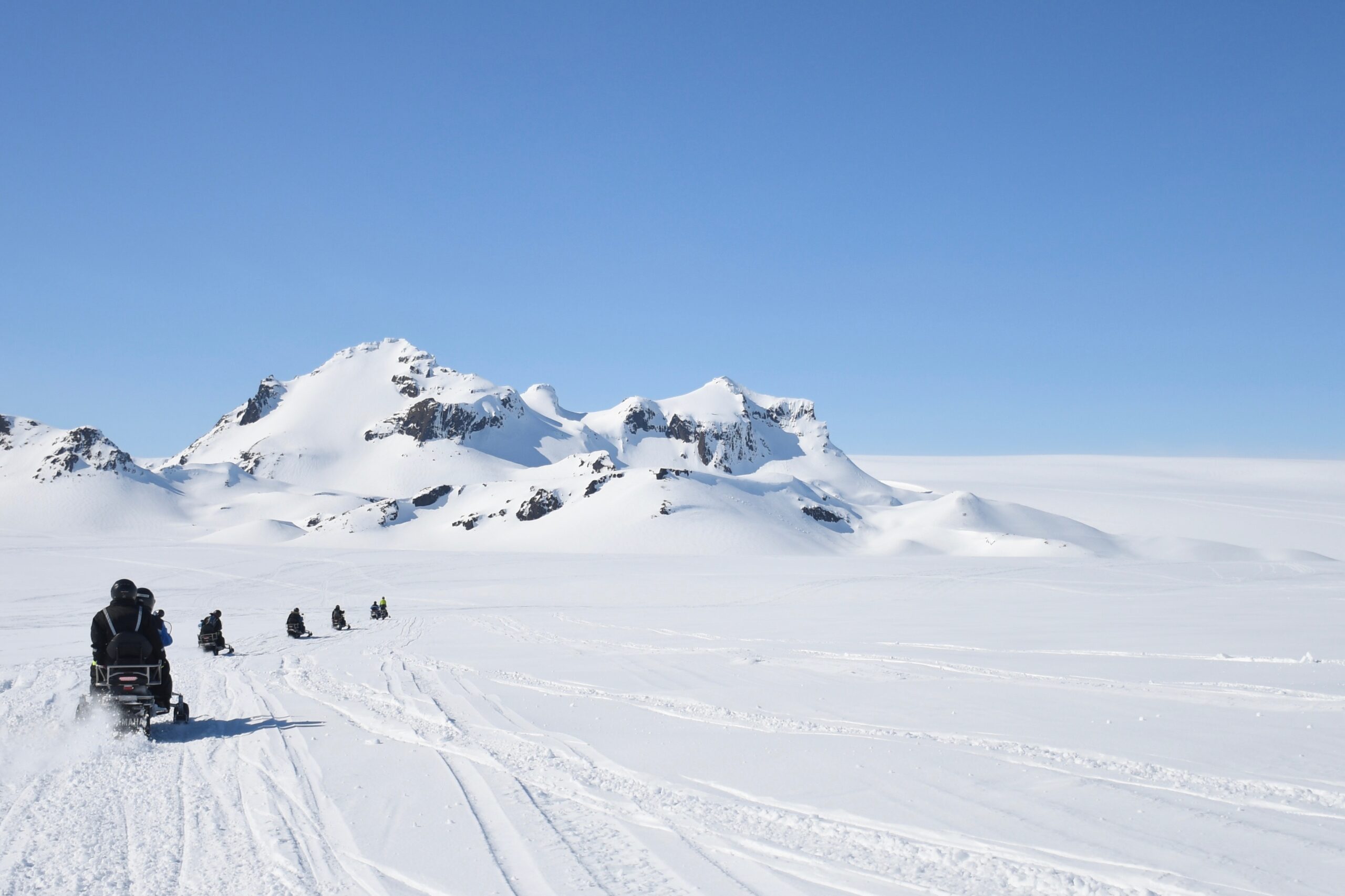
Craving a taste of all the diverse landscapes Iceland has to offer? A day trip to the Snaefellsnes peninsula might be just what you need. It’s like a microcosm of the whole country, which is why they call it ‘Iceland in Miniature.’ Trust me, there’s so much to see and do there that you’ll want to dive into our ultimate guide to the Snaefellsnes peninsula.
Now, the real star out here is the Snaefellsjokull glacier. Picture this: a majestic twin-peaked glacier sitting atop a volcano, with rugged lava fields and a dramatic coastline wrapping around three sides. It’s so striking that you can’t miss it from other top spots nearby, like the quiet, almost mystical village of Budir or the imposing Londrangar sea stacks.
This glacier isn’t just a pretty face; it holds a special place in the hearts of Icelanders. So much so, that they made it a National Park in 2001, a title shared with only two other sites in Iceland. And the Snaefellsjokull isn’t just famous for its looks – it’s a muse for artists and writers alike. Ever heard of Jules Verne’s ‘A Journey to the Center of the Earth’?
That classic sci-fi adventure from 1864 was inspired by this very glacier. If you’re wondering what’s a must-see in Iceland, put this glacier high on your list. On a clear day, its towering presence is visible all the way from Reykjavik, across Faxafloi Bay. But nothing beats getting up close and personal with it. And while it’s totally doable to drive to and from the glacier in a day, you might find yourself wanting to linger longer. It’s a highlight of many self-drive tours, like a six-day winter trip around Iceland’s Golden Circle & Snaefellsnes. Trust me, you’ll need more than a day to soak it all in!
9. Black Sand Beach in South Iceland
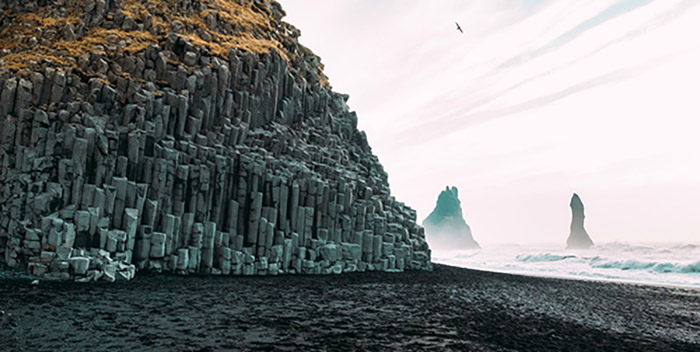
If those places that’s not just a destination, but a journey into a world so beautifully different. If you’re ever in Iceland and wondering where to go, let the South Coast be at the top of your list. This place isn’t like the rest of Iceland’s coastline, which is wild and rugged thanks to years upon years of battling the elements.
Here, it’s as if the past glacial floods wanted to tell a different story, smoothing out the rocks into these vast, mesmerizing stretches of black sand. There’s this one time I remember flying over Reynisfjara beach during the golden hour. The view from above? Absolutely unforgettable.
The black sands shone like a sheet of onyx under the soft glow of the setting sun. When you find yourself on the South Coast, take a stroll along these beaches, especially Reynisfjara near Vik. It’s more than just a popular spot; it’s a testament to nature’s artistry, with its stark beauty and dramatic contrasts. But, as much as these beaches captivate you, remember they demand respect.
The sea here isn’t for swimming – it’s beautiful but perilously cold and unpredictable. Reynisfjara, in particular, is infamous for its sneaker waves. They can catch you off-guard, rushing up the shore faster than you’d expect. I always advise friends to keep a safe distance, at least 67 to 100 feet (20 to 30 meters) from the water’s edge. Safety tips are there for a reason – heed them. It’s all about experiencing the breathtaking beauty of the South Coast without any risks. After all, Iceland is about embracing the wild, safely and memorably.
8. Diamond Beach is a Diamond
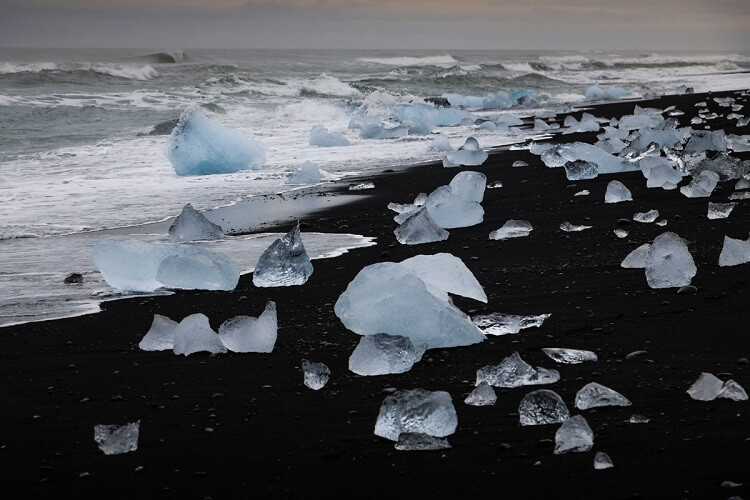
Beyond the well-trodden paths of Reynisfjara lies another treasure of the South Coast, a place some fondly call ‘the crown jewel of Iceland’s nature’ – the enchanting Jokulsarlon Glacier Lagoon and its neighbor, the mesmerizing Diamond Beach.
Standing there, with the surf rhythmically colliding against ice chunks on Diamond Beach, is an experience that words barely do justice. It’s like witnessing the earth in conversation with its elements. Throughout the year, the lagoon releases icebergs from a nearby glacial tongue, each embarking on a solemn march towards the ocean.
Their final act, a dramatic dance upon the waves, ends on the shores of Diamond Beach. This spectacle, where icebergs lay strewn across the dark sands, gleaming like diamonds, is hypnotically beautiful. There’s a striking contrast at play here – the vivid blue of the ice clashing against the beach’s ebony sands. It’s a painter’s palette, nature’s own masterpiece, making Diamond Beach not just a sight to see, but a wonder to behold.
Imagine this scene under the surreal glow of the northern lights or bathed in the endless daylight of the midnight sun. It’s like stepping into a scene from a fantasy book, too majestic and mystical to be real. And just when you think it can’t get any more magical, you might spot seals playfully navigating the lagoon or curiously peeking above the ocean waves. It’s these moments, where nature’s charm is at its most playful, that truly capture the heart of Iceland.
7. See the hole on Dyrholaey
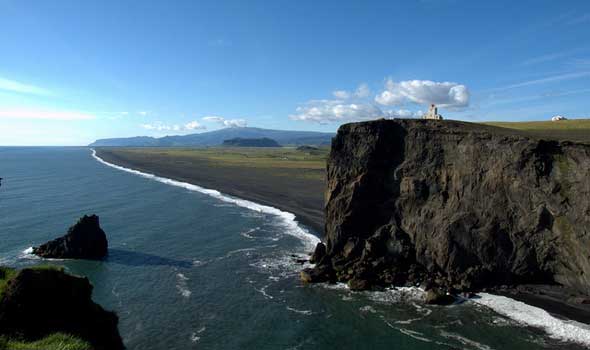
Whenever I wander over to Dyrholaey, just a casual walk from the haunting Reynisfjara beach, it feels like stepping into a postcard. Climbing atop this magnificent sea arch, you’re greeted with a view that’s simply out of this world – the endless Atlantic stretching out before you, framed by Iceland’s dramatic coast.
But what really steals the show in summer are the puffins. These quirky, colorful birds make Dyrholaey their home, adding a splash of life to the rugged scenery. Every time I visit, it’s like a personal rendezvous with the wild, unbridled spirit of Iceland. Dyrholaey isn’t just a place to see; it’s a place to feel the pulse of this incredible island.
6. The Blue Lagoon unforgettable experience
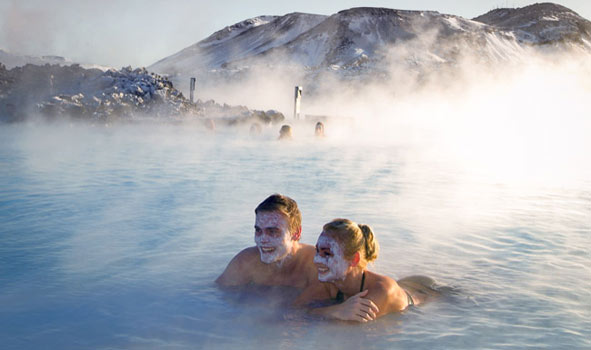
Ah, the Blue Lagoon in Iceland! Let me tell you, it’s nothing like the usual pool or beach experience. Nestled in the rugged Reykjanes peninsula, this geothermal spa is a world apart. The water’s this surreal shade of blue – think milky, opaque, and totally inviting.
The first time I eased into it, it felt like slipping into a warm bath, but a thousand times better. There’s this whole thing about the water being packed with minerals. I even slapped on one of those silica masks they give out – felt like a proper spa day right in the lagoon. People say it’s healing, and honestly, my skin never felt better afterward.
The setting is wild – you’re right there in the middle of these cool lava fields covered in this soft grey moss, and the steam curling up around you makes the whole place feel like you’ve stepped onto another planet. If you’re planning your Icelandic trip, make this your first or last stop. It’s super relaxing, perfect for shaking off jet lag or easing those post-hike muscles. And if you’re in the mood to splurge a bit, try their private treatments.
I went for an in-water massage once, and it was epic. They’ve even got these fancy beauty treatments tailored for different skin types, which is pretty cool. Getting there’s a breeze too. It’s just a short hop from Keflavik Airport and not too far from Reykjavik. You can easily grab a transfer from the airport, no fuss. Seriously, the Blue Lagoon is one of those ‘you’ve gotta see it to believe it’ kind of places. It’s an experience that’ll stick with you – like, ‘remember when we were in that incredible blue water in Iceland?’ kind of memory.
5. Wildlife in the Hornstrandir
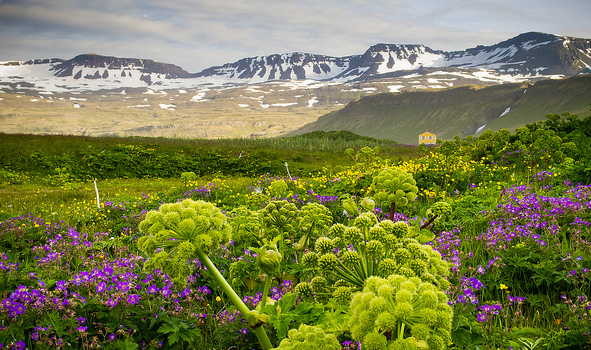
You know, there’s this spot in Iceland, Hornstrandir, that’s straight out of the old Sagas. Tucked away in the northernmost part of the Westfjords, it was abandoned ages ago because it was just too remote. You might think, “Why bother with a place like that on an Iceland trip?” But here’s the twist – it’s been reborn as this incredible nature reserve. It’s so wild and untouched that if you’re into wildlife or photography, this place is like hitting the jackpot. It’s one of those rare spots, super quiet and barely any people around, just like the Highlands, but it’s the animals that are the real locals here.
Picture this: you’re out there, and there’s an Arctic fox, just doing its thing, and you’re close enough to snap that perfect photo. These cliffs around here, they’re massive, soaring up to 1,752 feet, and they’re like a condo for thousands of seabirds. But the coolest part? The Arctic foxes. They’re actually kind of fearless around people. I mean, you shouldn’t feed wild animals, but these foxes have no qualms coming right up to you. Getting to Hornstrandir is a bit of an adventure in itself. You catch a ferry from Isafjordur or the Strandir area. And if you don’t want the hassle of figuring it all out yourself, there are tours of the Westfjords that’ll take care of all the details.
So, if you’re planning a trip to Iceland and want to see something completely different, out-of-the-way, and full of nature’s wonders, Hornstrandir has to be on your list. It’s like stepping into a completely untouched piece of the world.
4. The magic of Lake Myvatn
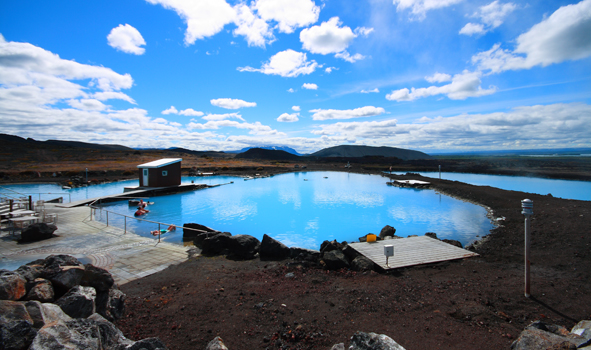
So, about 49 miles east of Akureyri (they call it the ‘Capital of North Iceland’), there’s this place that’s like a playground for geology and nature buffs – the Lake Myvatn area. Picture a landscape shaped by epic volcanic eruptions over 2,000 years ago. Now, it’s this awesome spot with tons of hidden treasures you can check out on a tour around Myvatn. The lakes themselves? Absolutely stunning. They’ve got this unique formation and are teeming with life. And if you’re visiting in summer, get ready for a bird-watching fiesta – the place is a magnet for dozens of bird species.
Oh, and keep your eyes peeled for these rare moss balls; they’re pretty cool and super rare. But wait till you see the geology around Lake Myvatn. It’s mind-blowing! There are these pseudo-craters – they look like mini volcanoes but aren’t. You can hike up and around them, dive into Iceland’s volcanic history, and feel like a real explorer uncovering ancient secrets.
Then there’s Dimmuborgir, or the ‘Black Fortress’ – a field of lava formations so wild and dramatic, it feels like stepping onto another planet. Hidden in this maze of lava, there’s this cave with the Grjotagja hot spring inside. Fun fact: it’s so famous now because of ‘Game of Thrones.’ Remember that steamy scene with Jon Snow and Ygritte? Shot right there! The colors of Lake Myvatn, with all those blues and greens, are just a feast for the eyes.
And if you’re itching for a dip in geothermal waters (who isn’t, right?), check out the Myvatn Nature Baths. It’s the perfect spot to just chill and soak in all the beauty of this incredible area.
3. The Beautiful Asbyrgi Canyon
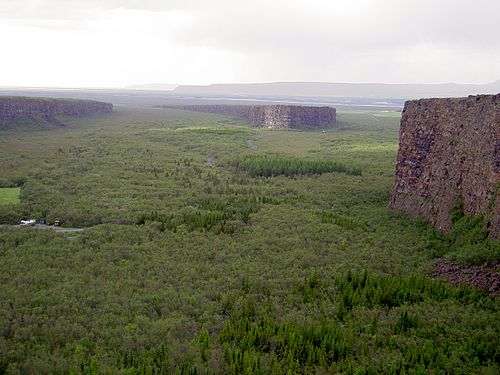
Off the usual tourist track in Northeast Iceland, there’s this spot called Asbyrgi canyon. It’s not your everyday sight – it’s got this horseshoe shape that looks like it’s been plucked straight from a Norse myth. Legend has it that Odin’s eight-legged horse, Sleipnir, left its mark here, literally. When you’re there, it’s like stepping right into a storybook, especially if you’re into Norse mythology. I remember the first time I stood on those cliffs and looked out over the plateau. The view was something else – like being transported back to a time when the world was wilder.
But the real surprise is inside the valley. It’s this lush, green world, full of birch and willow trees, different kinds of firs, larches, and pines. It’s so unexpectedly green and vibrant, you almost can’t believe you’re still in Iceland. The place is also rife with elf stories. With all that natural beauty and an almost tangible sense of old-world magic, it’s easy to imagine little elfin creatures darting between the trees. Asbyrgi is one of those rare places that make you think maybe, just maybe, those old legends might be true.
For anyone hitting up Iceland, I’d say Asbyrgi canyon is a must-visit. It’s not just the scenery – it’s the whole vibe of the place. It’s perfect for nature lovers, photography buffs, or anyone who just wants a taste of Iceland’s mythical side. Trust me, it’s an experience that sticks with you.
2. Do the Golden Circle
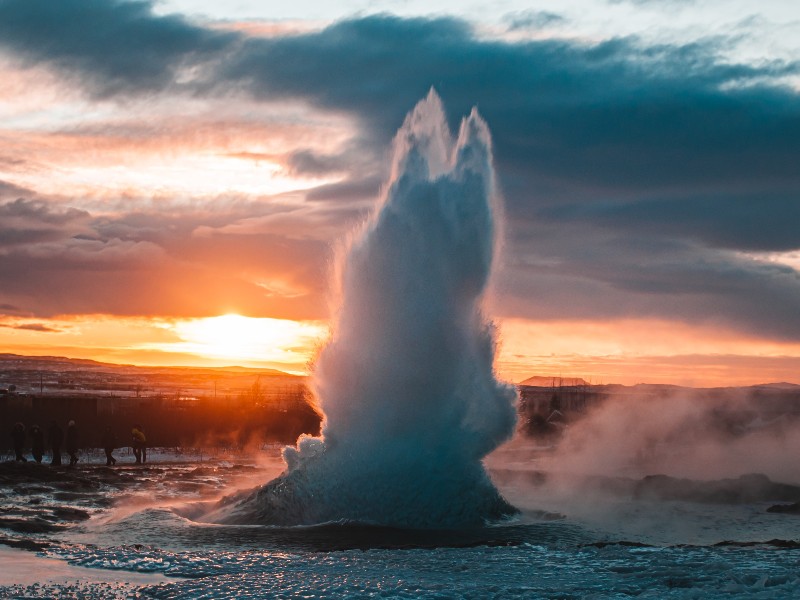
Oh man, let me tell you about the Golden Circle in Iceland. It’s this 186-mile loop that’s packed with some of the coolest sights in the southwest part of the country. We’re talking Thingvellir National Park, the Geysir Geothermal Area, and the incredible Gullfoss waterfall. You know what’s wild? You can actually snorkel and dive there all year round. Imagine floating between two continents at Thingvellir, which is also the only UNESCO site on Iceland’s mainland. The place is like a scene from a fantasy movie, with these crazy lava fields and forests, and these streams so clear you won’t believe your eyes.
Then there’s the Geysir area. You’ve probably heard the word ‘geyser’ before, right? It actually comes from the Geysir there, which is pretty cool, but these days it’s the neighbor, Strokkur, that steals the show. It erupts like a fountain, shooting water over 65 feet high every few minutes – it’s a camera’s dream. And Gullfoss? Wow, just wow. This waterfall is like nature turned up to eleven, with water thundering down into this massive valley. If you hit it on a sunny day, you might get lucky and see rainbows cutting through the spray.
A lot of folks do guided tours of the Golden Circle, but if you’re up for a bit of adventure, driving it yourself is the way to go. You get to take your time, soak it all in, and really make it your own. Trust me, it’s one of those things you’ve got to see to believe.
1. Chase the Midnight Sun or the Northern Lights
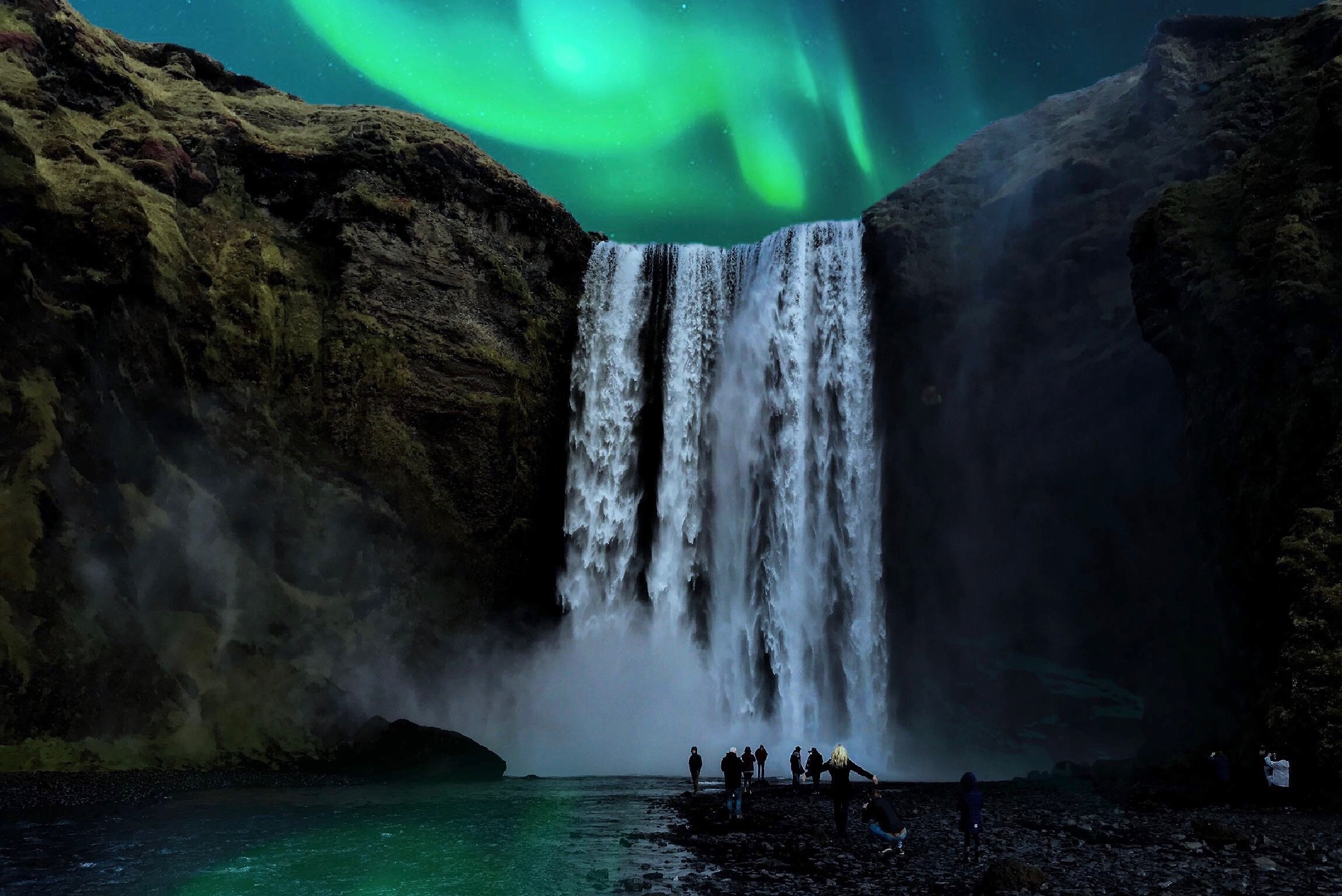
You know, Iceland’s got these two natural wonders that’ll just knock your socks off – the never-setting midnight sun and those mind-blowing northern lights. They’re not ‘sites’ in the usual sense, but man, are they the ultimate Icelandic experiences. We’ve even got a whole post dedicated to figuring out the best time to catch the northern lights. Usually, you’re looking at late August to April, with the heart of winter being prime time. And a hot tip? Jump on a northern lights tour. The guides know all the best spots and tricks to increase your chances of seeing that magical aurora borealis. Picture this: Mt. Kirkjufell on the Snæfellsnes peninsula, mirrored in the still water under a sky dancing with color. It’s something else, really.
But hey, if you’re more of a summer person, Iceland’s got you covered with the midnight sun from May to August. Imagine the sun just hanging there on the horizon, all through the night. There are loads of midnight sun tours where you can soak up those endless golden hours. We’ve got the whole lowdown on this phenomenon in our guide to the midnight sun. Honestly, both the northern lights and the midnight sun are so uniquely Icelandic that you might just want to visit twice – once for the winter’s aurora magic and again for the endless summer days. It’s like two different worlds, each with its own kind of magic.
Whether you’re watching the sky light up with green and purple lights, or basking in the glow of a sun that refuses to set, you’re in for an unforgettable experience. Iceland, with its natural light shows, is truly a place where nature’s wonders never cease to amaze.

